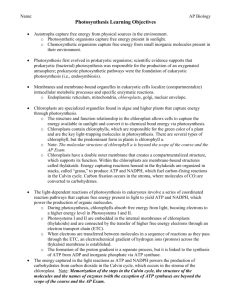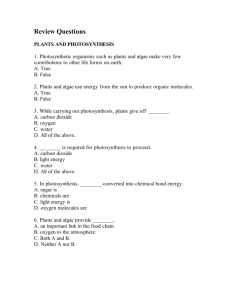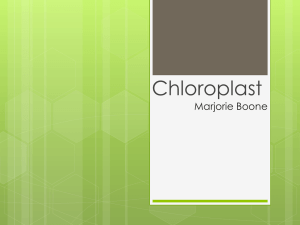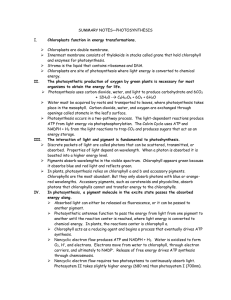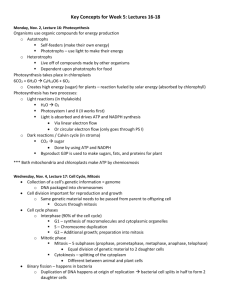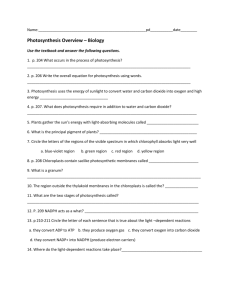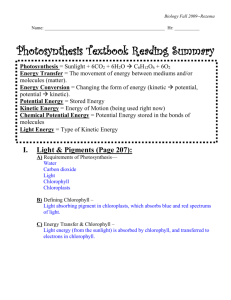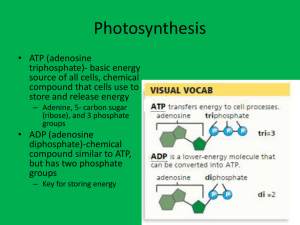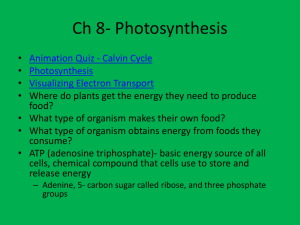Plant Function Unit Curriculum Summary
advertisement
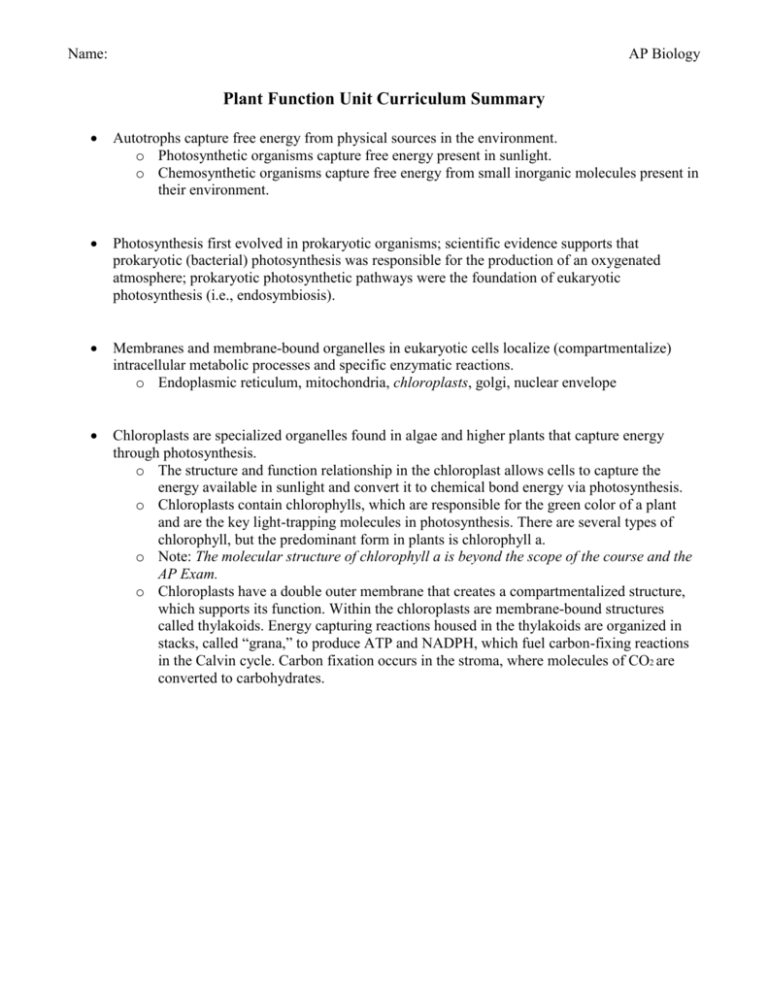
Name: AP Biology Plant Function Unit Curriculum Summary Autotrophs capture free energy from physical sources in the environment. o Photosynthetic organisms capture free energy present in sunlight. o Chemosynthetic organisms capture free energy from small inorganic molecules present in their environment. Photosynthesis first evolved in prokaryotic organisms; scientific evidence supports that prokaryotic (bacterial) photosynthesis was responsible for the production of an oxygenated atmosphere; prokaryotic photosynthetic pathways were the foundation of eukaryotic photosynthesis (i.e., endosymbiosis). Membranes and membrane-bound organelles in eukaryotic cells localize (compartmentalize) intracellular metabolic processes and specific enzymatic reactions. o Endoplasmic reticulum, mitochondria, chloroplasts, golgi, nuclear envelope Chloroplasts are specialized organelles found in algae and higher plants that capture energy through photosynthesis. o The structure and function relationship in the chloroplast allows cells to capture the energy available in sunlight and convert it to chemical bond energy via photosynthesis. o Chloroplasts contain chlorophylls, which are responsible for the green color of a plant and are the key light-trapping molecules in photosynthesis. There are several types of chlorophyll, but the predominant form in plants is chlorophyll a. o Note: The molecular structure of chlorophyll a is beyond the scope of the course and the AP Exam. o Chloroplasts have a double outer membrane that creates a compartmentalized structure, which supports its function. Within the chloroplasts are membrane-bound structures called thylakoids. Energy capturing reactions housed in the thylakoids are organized in stacks, called “grana,” to produce ATP and NADPH, which fuel carbon-fixing reactions in the Calvin cycle. Carbon fixation occurs in the stroma, where molecules of CO2 are converted to carbohydrates. Name: AP Biology The light-dependent reactions of photosynthesis in eukaryotes involve a series of coordinated reaction pathways that capture free energy present in light to yield ATP and NADPH, which power the production of organic molecules. o During photosynthesis, chlorophylls absorb free energy from light, boosting electrons to a higher energy level in Photosystems I and II. o Photosystems I and II are embedded in the internal membranes of chloroplasts (thylakoids) and are connected by the transfer of higher free energy electrons through an electron transport chain (ETC). o When electrons are transferred between molecules in a sequence of reactions as they pass through the ETC, an electrochemical gradient of hydrogen ions (protons) across the thykaloid membrane is established. o The formation of the proton gradient is a separate process, but it is linked to the synthesis of ATP from ADP and inorganic phosphate via ATP synthase. o The energy captured in the light reactions as ATP and NADPH powers the production of carbohydrates from carbon dioxide in the Calvin cycle, which occurs in the stroma of the chloroplast. o Note: Memorization of the steps in the Calvin cycle, the structure of the molecules and the names of enzymes (with the exception of ATP synthase) are beyond the scope of the course and the AP Exam. Living systems depend on properties of water that result from its polarity and hydrogen bonding. o Cohesion, adhesion, high specific heat capacity, universal solvent, heat of vaporization, water’s thermal conductivity. o Cohesion, adhesion, and water potential are specifically important in the movement of water through the plant’s xylem.
